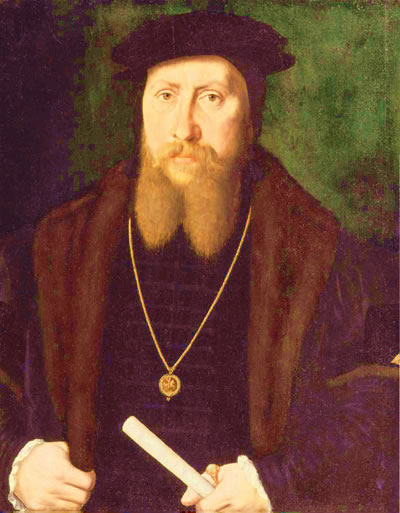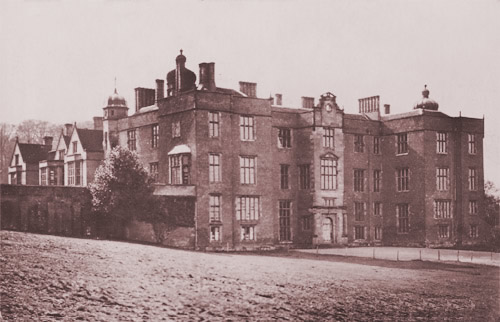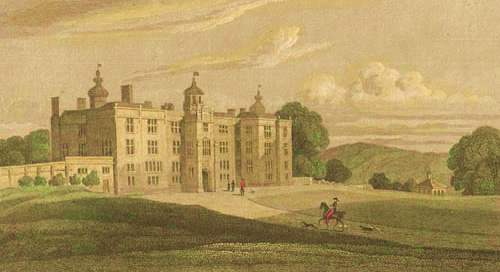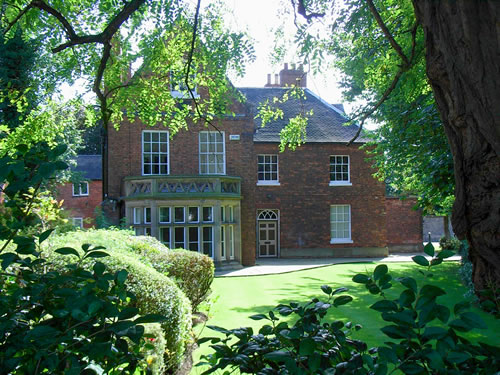Sir William Paget – 1st Baron Paget of Beaudesert
 In Tudor times, William Paget was one of the most prominent men in England. Son of John, one of the serjeants-at-mace of the city of London, he was born in London in 1506. His father was said to have been of humble origin from Wednesbury, Staffordshire. Educated at St Paul’s School, and at Trinity Hall, Cambridge, proceeding afterwards to the university of Paris.
In Tudor times, William Paget was one of the most prominent men in England. Son of John, one of the serjeants-at-mace of the city of London, he was born in London in 1506. His father was said to have been of humble origin from Wednesbury, Staffordshire. Educated at St Paul’s School, and at Trinity Hall, Cambridge, proceeding afterwards to the university of Paris.
Probably through the influence of Stephen Gardiner, who had early befriended Paget, he was employed by Henry VIII in several important diplomatic missions; in 1532 he was appointed clerk of the signet and soon afterwards of the privy council. He acquired large estates from Henry VIII on the dissolution of the monasteries. He became secretary to Queen Anne of Cleves in 1539, and in 1543 he was sworn of the privy council.
A letter written by William Paget, clerk to the Privy Council, to Sir Thomas Wriothesley, Garter King-at-arms, dated 27 Jun 1541, only two days before Lord Dacre’s execution, tells that the Lord Chancellor and the Lords Sussex, Hertford and St. John, with Mr. Baker, consulted in the Star Chamber upon Lord Dacre’s case:
Sir, I am sent for to the Council, and must stay my writing until soon.
At my coming to the Star Chamber there I found a11 the lords, to the number of xvij assembled for a conference touching the lord Dacre’s case;. . . To Council they went, and had with them present the Chief Justices, with others of the King’s learned Counsel; and albeit I was excluded, yet they ‘spake so loud, some of them, that I might hear them notwithstanding two doors shut between us. Among the rest that could not agree to wilful murder, the Lord Cobham, as I took him by his voice, was vehement and stiff: Suddenly and softly they agreed, I wot not how, and departed to the Kings Bench together; whereas the lord Chancellor executing the office of High Steward, the lord Dacre pledd not guilty to the indictment, referring himself to the trial of his peers, and declaring, with long circumstances, that he intended no murder, and so purged himself to the audience as much as he might. And yet nevertheless afterward, by an inducement of the confession of the rest already condemned, declared unto him by the judge, he refused his trial, and, upon hope of grace (as I took it), confessed the indictment; which he did not without some insinuation. His judgment was to be hanged. It was pitiful to see so young a man by his own folly brought to such a case, but joyful to hear him speak at the last so wisely and show himself so repentant. . . . To-day after dinner the Council was with the King to declare lord Dacre’s humble submission, hoping thereby to move his Majesty to pardon him, which took no effect, for to-morrow shall. . . Mantel, Roydon, and Frowdes suffer, and the lord Dacre upon Wednesday. God have mercy upon them and give them grace to repent their evil doings and to take patiently their deaths.
He was Secretary of State with Thomas Wriothesley, Earl of Southampton, 1543 and 1544, and again with Sir William Petre, 1544 to 1547. Henry VIII in his later years relied much on his advice, named him as one of the executors of his will, and appointed him one of the council to act during the minority of Edward VI.
Influential in Edward Seymour’s plot to become Protector of Edward VI, Paget at first vigorously supported the Protector Somerset, while counselling a moderation which Somerset did not always observe. In 1547 he was made comptroller of the King’s household, Chancellor of the Duchy of Lancaster, and a Knight of the Garter; and in 1549 he was summoned by writ to the House of Lords as Baron Paget de Beaudesert. About the same time he obtained extensive grants of lands, including Cannock Chase and Burton Abbey in Staffordshire, and in London the residence of the bishops of Exeter, afterwards known successively as Lincoln House and Essex House, on the site now occupied by the Outer Temple in the Strand. He also obtained Beaudesert in Warwickshire, which remained the chief seat of the Paget family. Paget shared Somerset’s disgrace, being committed to the Tower in 1551 and degraded from the Order of the Garter in the following year, besides suffering a heavy fine by the Star Chamber for having profited at the expense of the Crown in his administration of the duchy of Lancaster. He was, however, restored to the King’s favour in 1553, and was one of the twenty-six peers who signed the device of King Edward; was one of Jane Grey’s Privy Councillors, but signed a proclamation in support of Mary shortly after. He made his peace with Queen Mary, who reinstated him as a Knight of the Garter and in the privy council in 1553, and appointed him Lord Privy Seal in 1556. William Paget openly suggested to marry Edward Courtenay to Elizabeth; but Courtenay had rejected it, on the grounds that it would be beneath the dignity of one of his unblemished lineage. On the accession of Elizabeth I in 1558 Paget retired from public life.
By his wife Anne Preston he had six daughters and five sons, the two eldest of whom, Henry and Thomas, succeeded in turn to the peerage. The Pagets’ marriage was close, and William’s fellow-councillors had on occasion appealed to her influence with him, just as she had appealed to them on his behalf in 1552. Lady Paget was not an especial favourite of Queen Mary, though she was chosen to escort her in the coronation procession.

The Paget family’s main residence was Beaudesert House in Cannock Chase. But before this was built, they often occupied the Manor House within the precincts of the former Burton abbey.

When they stayed there, they lived in grand style. An inventory of c. 1580 shows that there were over 60 rooms, many handsomely furnished. On occasion, the household staff numbered 75 persons, and in the first week of Jan of that year, there were 14 guests staying in the house, including the sheriff of Staffordshire.

When Burton Abbey was granted to its new owner in 1546, William Paget began planning to expand the Manor House, known to have existed since at least 1514, into a grand mansion. A plan of 1562 shows that the house was to have three storeys and a long gallery. To provide the materials for this project, the old abbey buildings were to be cannibalised. There were major alterations to the house over the next three centuries. The present building, still very much in evidence close to the Market Place, is mainly of brick but was formerly of stone, and timber-framed. The attic probably has the most exceptional medieval roof in Burton. The early 19th century range probably occupies the site of a medieval open hall, and parts of the building still date back to the original building.
Sir William died in 1563. After his death, after being implicated in Catholic plots against the Queen, the manor house along with most of the family estates were confiscated, ended the Pagets’ interest in the Manor House.
It was leased to Richard Almond in 1612 by which time some of the former Abbey buildings incorporated into the house were in a very bad state of repair.

